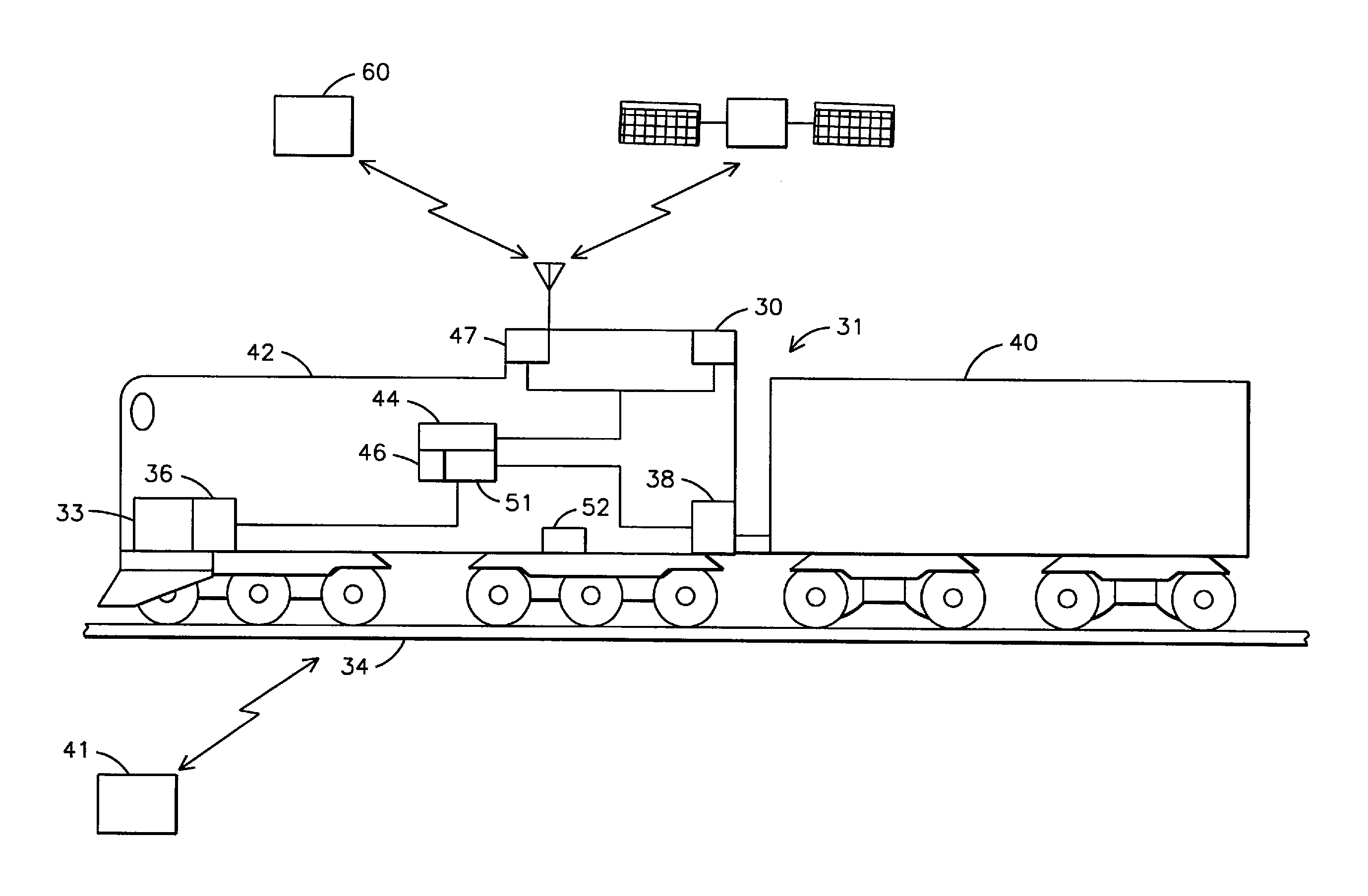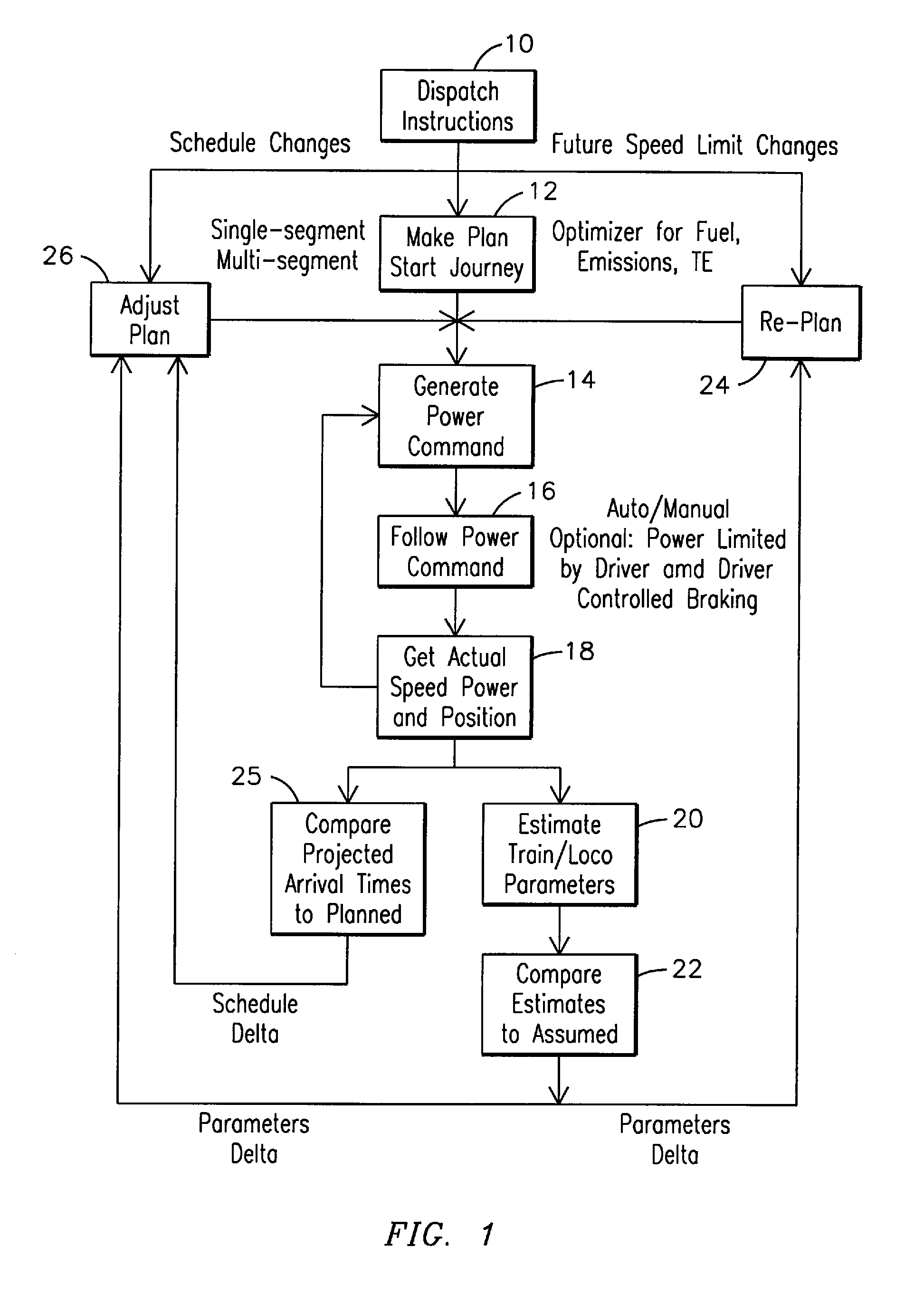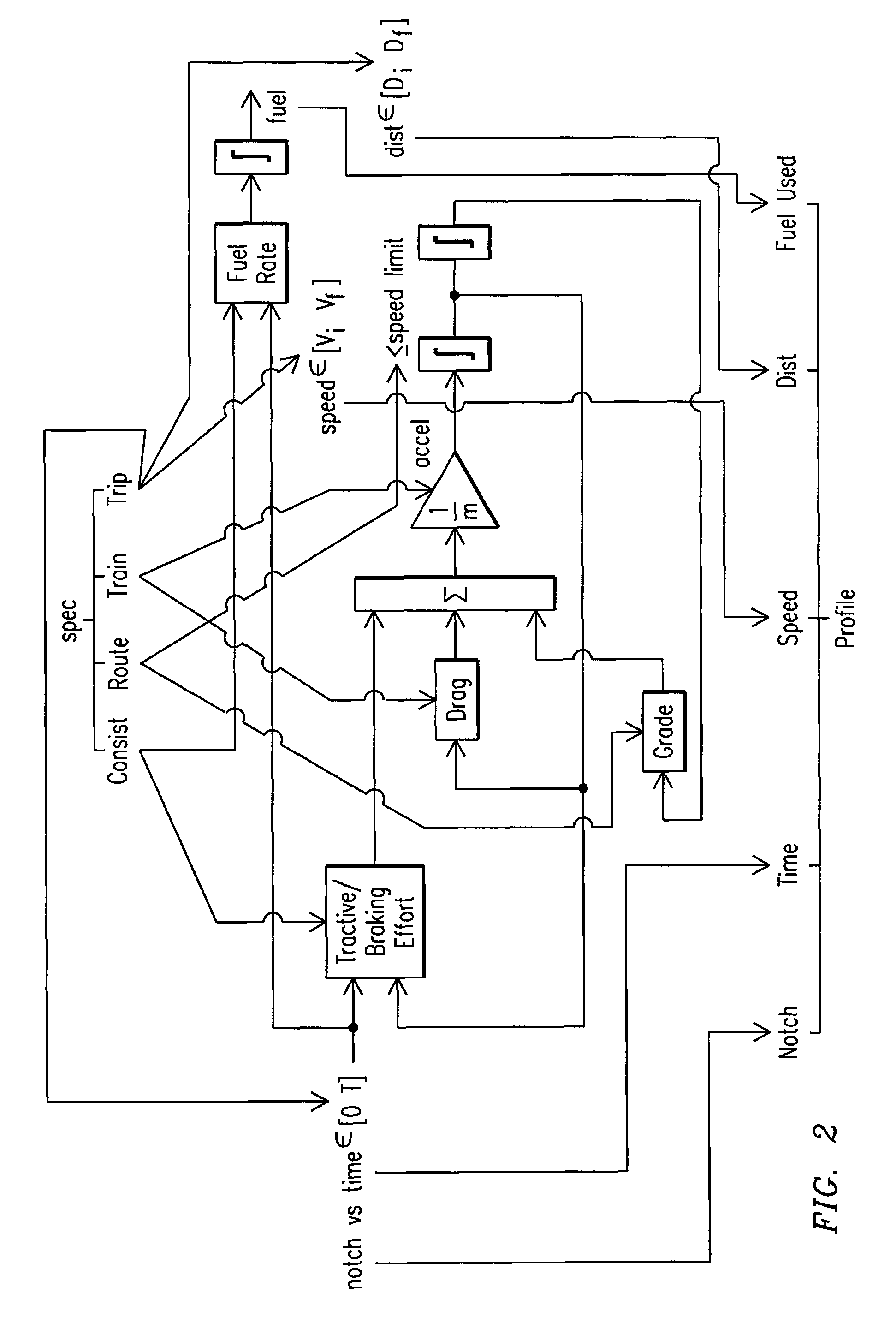System, method, and computer software code for instructing an operator to control a powered system having an autonomous controller
a technology of autonomous controller and power system, applied in the field of powered system, can solve the problems of large variation in fuel consumption and/or emission output, difficult to achieve, and no further determination of actual emission outpu
- Summary
- Abstract
- Description
- Claims
- Application Information
AI Technical Summary
Benefits of technology
Problems solved by technology
Method used
Image
Examples
Embodiment Construction
[0089]Reference will now be made in detail to the embodiments consistent with the invention, examples of which are illustrated in the accompanying drawings. Wherever possible, the same reference numerals used throughout the drawings refer to the same or like parts.
[0090]Though embodiments of the inventive subject matter are described with respect to vehicles, such as rail vehicles or railway transportation systems, specifically trains and locomotives, embodiments of the inventive subject matter are also applicable for other uses, such as but not limited to off-highway vehicles, marine vessels, stationary units, agricultural vehicles, and transport buses, each which may use at least one diesel engine, or diesel internal combustion engine. Toward this end, when discussing a specified mission, this includes a task or requirement to be performed by the powered system. Although various embodiments herein are described in connection with trains, locomotives, locomotive consists, other rai...
PUM
 Login to View More
Login to View More Abstract
Description
Claims
Application Information
 Login to View More
Login to View More - R&D
- Intellectual Property
- Life Sciences
- Materials
- Tech Scout
- Unparalleled Data Quality
- Higher Quality Content
- 60% Fewer Hallucinations
Browse by: Latest US Patents, China's latest patents, Technical Efficacy Thesaurus, Application Domain, Technology Topic, Popular Technical Reports.
© 2025 PatSnap. All rights reserved.Legal|Privacy policy|Modern Slavery Act Transparency Statement|Sitemap|About US| Contact US: help@patsnap.com



